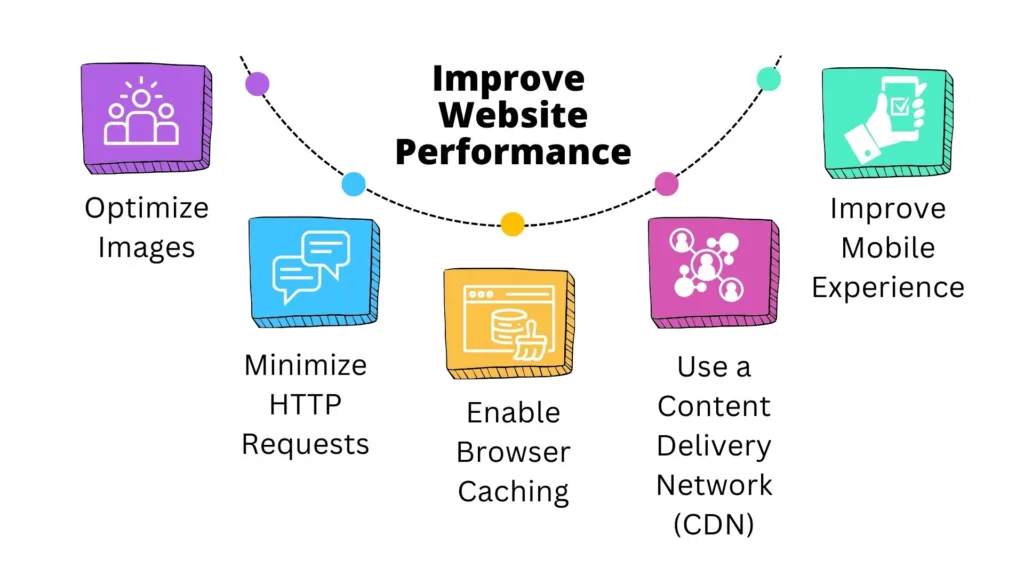In today’s fast-paced digital world, a website is more than just an online brochure; it’s a crucial tool for businesses to connect with their audience, generate leads, and drive sales. But how do you know if your website is performing up to par?
This is where website performance benchmarking comes into play.
But how do you go about this? Let’s delve into the nitty-gritty of website performance and how to benchmark your website performance effectively in 2024.
Website performance benchmarking is a process of comparing your website’s metrics to industry standards or competitors. It’s like checking your car’s performance against other cars in its class to see if it’s holding its own.
By understanding your website’s strengths and weaknesses relative to others, you can identify areas for improvement and optimize your online presence.
Why is Website Performance Benchmarking Important?
- Identify Underperformance: Benchmarking helps pinpoint areas where your website is lagging behind competitors.
- Set Realistic Goals: By comparing yourself to industry leaders, you can set achievable targets for improvement.
- Improve User Experience: Benchmarking can reveal issues that impact user experience, such as slow loading times or poor navigation.
- Boost SEO: Search engines favor websites with good performance, so benchmarking can help improve your search rankings.
- Increase Conversions: A high-performing website will more likely convert visitors into customers.
How to Check Performance Score of Website?
Before diving into the details of benchmarking, you need to know your current performance score. Several tools can help you assess your website’s performance, including:
Using these tools, you can get a clear picture of your website’s speed, usability, and SEO performance.
- Identify Key Metrics: Focus on metrics that matter most to your business, such as load time, bounce rate, conversion rate, and SEO rankings.
- Select Benchmarking Tools: Use tools like those mentioned above to gather data.
- Analyze Competitors: Look at the performance of competitors’ websites to identify industry benchmarks for websites.
- Set Goals: Define realistic and achievable goals based on your analysis.
- Monitor and Iterate: Regularly monitor your website’s performance and make necessary adjustments.
Understanding Industry Benchmarks for Websites

Industry benchmarks vary depending on your sector. For instance, an e-commerce website will have different performance expectations than a content-heavy blog. Here are some general benchmarks to consider:
- Website Speed: How quickly your website loads. Ideally, your website should load in under 3 seconds.
- Bounce Rate: The percentage of visitors who leave of visitors who take a desired action, such as making a purchase or filling out a form. A bounce rate below 40% is considered good.
- Organic Traffic: The number of visitors who come to your website through search engines.
- Mobile Performance: How well your website functions on mobile devices.
- Conversion Rate: This varies widely by industry but aim for at least 2-5%.
Common Causes of Website Underperformance
If your website isn’t hitting these benchmarks, it’s time for a website underperformance analysis. Common issues include:
- Slow Load Times: Often caused by unoptimized images, excessive scripts, and lack of caching.
- Poor SEO: Due to lack of keyword optimization, poor meta tags, and slow site speed.
- Low User Engagement: Often a result of poor design, lack of compelling content, or difficult navigation.
SEO Benchmarking: A Key Component
SEO benchmarking involves analyzing your website’s search engine performance against competitors.
Key aspects to consider include:
- Keyword Rankings: How well are your target keywords performing?
- Backlink Profile: The quality and quantity of backlinks pointing to your site.
- On-Page SEO: Factors like meta tags, header tags, and content quality.
How to Improve Website Performance
Improving website performance involves addressing the issues identified during your benchmarking process.
Here are some actionable tips:

- Optimize Images: Compress images to reduce load times without sacrificing quality.
- Minimize HTTP Requests: Reduce the number of elements on each page to speed up load times.
- Enable Browser Caching: Store parts of your website in the user’s browser to reduce load times on subsequent visits.
- Use a Content Delivery Network (CDN): Distribute your content across multiple servers to improve load times globally.
- Improve Mobile Experience: Ensure your website is mobile-friendly as more users access sites via mobile devices.
Regular Monitoring and Updates
Website performance isn’t a one-time task. It requires continuous monitoring and updates. Use tools like Google Analytics to track your progress and make data-driven decisions. Regularly update your content, design, and technical aspects to keep your website in top shape.
Conclusion
Is your website underperforming? The answer lies in comprehensive website performance benchmarking. By understanding how to benchmark your website performance, you can identify areas for improvement and implement strategies to enhance your online presence.
Regular analysis and updates are essential to stay ahead in the competitive digital landscape of 2024.
Remember, your website is often the first interaction potential customers have with your business. Make it count by ensuring it performs at its best.
Ready to take your website to the next level?
Take our free website health check and receive tailored improvement advice.
Contact us to fully optimize your website.
Thank you for reading and do share this post!
Author: Akanksha Bohra
- Get link
- X
- Other Apps
- Get link
- X
- Other Apps




Comments
Post a Comment